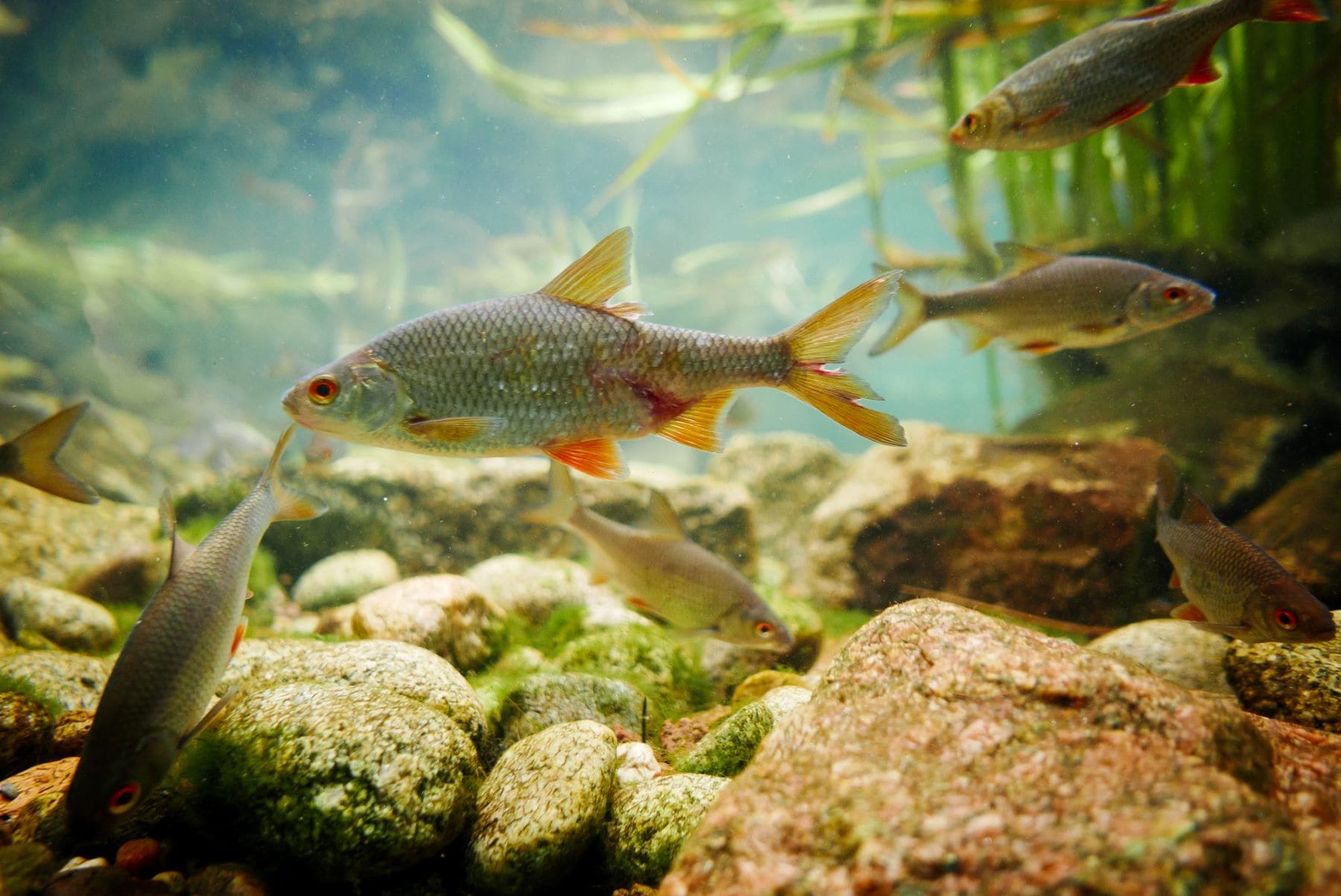He The environment in general must maintain a healthy balanceotherwise land animals, fish, plants, etc. Those who depend on them may suffer the consequences of the apathy and negligence of those who pollute the air, soil and water.
Water pollution occurs when certain harmful substances, which may be chemical, biological, etc., are contaminated. affect a river flow, an ocean, an aquifer, or other body of water, which ultimately ends up degrade water quality, making it toxic to people, fish or the environment.
The changes that Climate change and pollution are causing rivers and other water ecosystems sweet can hinder visual and chemical communication between fish – crucial for choosing a mate – and promote mating between individuals of different species, known as hybridization. A work published in Biological Reviews highlights the importance of deepening knowledge of these interactions to preserve biological diversity.


Irregular reproductive behavior of fish
Through a systematic review of the literature in disciplines such as ecotoxicology and evolutionary biology, the authors evaluated biological interactions, toxic mechanisms and the effect of environmental stressors such as Chemical pollution and climate change in changing mate preferences and the induction of hybridization in freshwater fish.
“We need identify chemical and physical stressors that influence mate choice (in fish)the mechanisms involved, the concentrations at which this occurs and the extent of its impact on individuals, populations, species and biodiversity in nature,” the study highlights.
How would biodiversity be affected? In some cases, fish specimens born as a result of hybridization may be less viable and more sensitive to environmental stressors, such as parasites, bacteria, changes in water quality or changes in temperaturesays the study’s lead author, Wilson Ramírez-Duarte, of the Department of Physical and Environmental Sciences at Concordia University in Edmonton, Canada.
“In other cases, the offspring are infertile, so the animals would waste reproductive effort and this would result in a lower abundance of a species, or its extinction, in a given ecosystem”, explains the specialist. Salmon, for example, “generally reproduce only once, after a long migration process. If they cross individuals of another species, that species could quickly disappear,” he says.
What consequences would this have for humanity? For Ramírez-Duarte, “humans are just another species on this planet, and each species plays a role in ecosystems. The continued decline in biodiversity that we observe as a result of our activities, affects the balance of ecosystems and, from a utilitarian perspective, “It reduces the resources we have to ensure our survival as a species.”
Impact of global warming on fish
The specialist mentions that hybridization occurs in different animals. It has been reported in mammals, such as the polar bear and brown bear, as a result of global warming; also in birds and reptiles, among others. The first is that it considers the effects of pollution on an ecosystem-wide basis, “covering aspects not usually central to ecotoxicological studies, such as reproductive behavior.”
He secondly, analyzes the impact of climate change. “It is no longer possible to ignore the effects of climate change on every aspect of biological systems, and it is important to emphasize that these effects are already occurring on a large scale and continue to be underestimated.”
Finally, it emphasizes the relevance of to promote research into the synergistic effects of stressors anthropogenic and hybridization. “We must remember that animals in the natural environment are exposed to multiple stressors, and the effects of their interactions are unpredictable.”
What should be done to prevent hybridization? Ramírez-Duarte proposes three approaches: treat waste water from domestic and industrial origin; make progress in regulating the use of chemicals (especially pesticides, metals, industrial chemicals) and implement tests that show that new chemicals, at certain concentrations, do not influence mate choice.
According to Kochhann, significant progress has been made in recent decades on the permissible limits for environmental pollutants such as metals and hydrocarbons, but very little attention has been paid to the effects of human drugs that “cause profound effects on the endocrine systems of aquatic animals”
“The proper and correct functioning of the endocrine system has a direct influence on all reproductive aspects; Therefore, it is necessary to think about efficient wastewater disposal systems. This has been a major challenge since the Very low concentrations can often cause effects in humanssays the specialist.
Claudia Mazzeo

